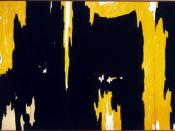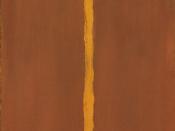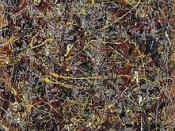CASE STUDY
"Modernism reads like a history of revolutions"
Two groups of artists who sought to interpret the world in new ways were the fauves and the abstract expressionists; such artists include Henri Mattisse and Jackson Pollock. This essay will attempt to explain how these groups of artists have interpreted the world in their art making.
Henri Mattisse was deeply affected by the work of the Impressionists and the Post-Impressionists; the series of traditional exhibitions of Cézanne, Van Gogh and Gaugin at the turn of the century impelled his work towards new methods of painting and a new philosophy of art. It was in the area of colour. Mattisse had been fascinated by the colour theory of Seurat and Signac so much that he proceeded to commence the most aggressively colourful movement in painting since the middle ages. He abandoned all the academy theories for making pictures. He placed colour on the canvas to create pictorial values and ignored the descriptive function it had performed for so long.
The way the fauves saw the world was reorganised so that the formal structure of the subject and the perspective were both transformed into a colour statement. Thus the artists saw art longer as just the subject of their paintings but rather the process and technique of the colour they used and its surroundings. Such works where this can be seen include Matisse: The Sorrows of the King, Raoul Dufy: Deauville: Drying the Sails, André Derain: Portrait of Matisse and Maurice de Vlaminck: Restaurant at Marly-le-roi.
Fauvism was a European movement that change the modern art world. No longer were artist's minds fixed with the understanding of colour but rather were now creating work that explored the depictions of colour and created new meanings. The fauves had set out to interpret...


